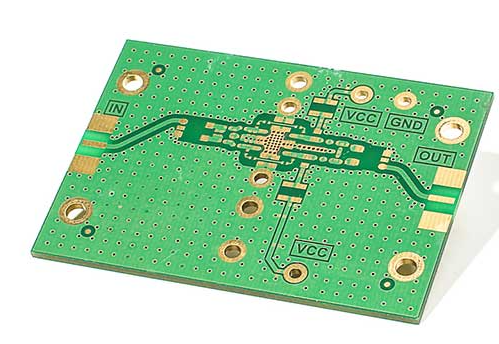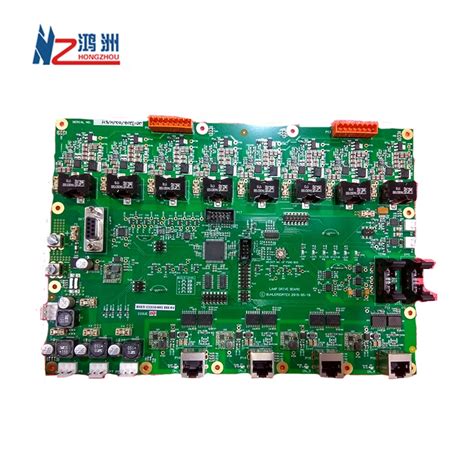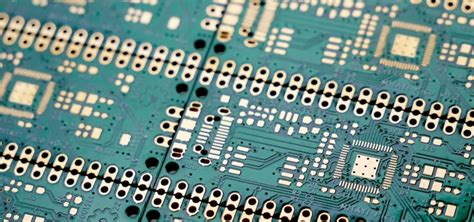Flex pcb laser cutting
Advantages Of Flex PCB Laser Cutting Over Traditional Methods
Flex PCB laser cutting has emerged as a revolutionary technique in the manufacturing of flexible printed circuit boards (PCBs), offering numerous advantages over traditional methods. One of the primary benefits of laser cutting is its unparalleled precision. Traditional mechanical cutting methods often struggle to achieve the same level of accuracy, especially when dealing with intricate designs and fine details. Laser cutting, on the other hand, utilizes a focused beam of light that can be controlled with extreme precision, allowing for the creation of complex patterns and shapes with minimal margin for error.
In addition to precision, the speed of laser cutting is another significant advantage.
Traditional methods, such as die cutting or mechanical milling, can be time-consuming and labor-intensive. Laser cutting, however, can process materials at a much faster rate, significantly reducing production times. This increased efficiency not only accelerates the manufacturing process but also allows for quicker turnaround times, which is particularly beneficial in industries where time-to-market is critical.
Moreover, laser cutting offers superior flexibility in terms of material compatibility.
Traditional cutting methods may require different tools or adjustments for various materials, which can be cumbersome and costly. Laser cutting, however, can easily adapt to different types of materials, including polyimide, polyester, and other substrates commonly used in flex PCBs. This versatility simplifies the manufacturing process and reduces the need for multiple specialized tools.
Another notable advantage of flex PCB laser cutting is the reduction of mechanical stress on the materials.
Traditional cutting methods often involve physical contact, which can introduce stress and potential damage to the delicate components of a flex PCB. Laser cutting, being a non-contact process, eliminates this risk, ensuring that the integrity of the material is maintained throughout the cutting process. This is particularly important for applications where the reliability and durability of the PCB are paramount.
Furthermore, laser cutting is an environmentally friendly option compared to traditional methods.
Mechanical cutting processes often generate significant amounts of waste material, which can be difficult to manage and dispose of. Laser cutting, however, produces minimal waste, as the precision of the laser allows for more efficient use of materials. Additionally, the process itself is cleaner, as it does not produce the same level of dust and debris associated with mechanical cutting.
Cost-effectiveness is another compelling reason to consider laser cutting for flex PCBs.
While the initial investment in laser cutting equipment may be higher, the long-term savings are substantial. The increased efficiency, reduced waste, and lower maintenance costs associated with laser cutting contribute to a more economical manufacturing process. Additionally, the ability to quickly adapt to design changes without the need for new tooling further enhances cost savings.
In conclusion, flex PCB laser cutting offers a multitude of advantages over traditional cutting methods. Its precision, speed, material compatibility, and reduced mechanical stress make it an ideal choice for modern PCB manufacturing. The environmental benefits and cost-effectiveness further underscore its superiority. As technology continues to advance, it is likely that laser cutting will become an increasingly integral part of the flex PCB manufacturing process, driving innovation and efficiency in the industry.

Precision And Efficiency In Flex PCB Laser Cutting
Flex PCB laser cutting represents a significant advancement in the manufacturing of flexible printed circuit boards (PCBs), offering unparalleled precision and efficiency. This technology has become increasingly vital as the demand for smaller, more complex electronic devices continues to grow. The ability to produce intricate designs with high accuracy is essential for meeting the stringent requirements of modern electronics.
One of the primary advantages of flex PCB laser cutting is its precision.
Traditional mechanical cutting methods often struggle to achieve the fine detail required for contemporary electronic components. In contrast, laser cutting utilizes a focused beam of light to cut through materials with exceptional accuracy. This precision is particularly beneficial for flex PCBs, which are often used in applications where space is at a premium, such as in smartphones, medical devices, and wearable technology. The ability to create intricate patterns and fine features without damaging the surrounding material is crucial for maintaining the integrity and functionality of these devices.
Moreover, the efficiency of flex PCB laser cutting cannot be overstated.
Traditional cutting methods can be time-consuming and labor-intensive, often requiring multiple steps and manual intervention. Laser cutting, on the other hand, is a highly automated process that can significantly reduce production times. The speed at which lasers can cut through materials, combined with their ability to operate continuously without the need for frequent maintenance, makes them an ideal choice for high-volume manufacturing. This efficiency translates into cost savings for manufacturers, as well as faster turnaround times for product development and production.
In addition to precision and efficiency, flex PCB laser cutting offers a level of versatility that is unmatched by other cutting methods.
Lasers can cut through a wide range of materials, including polyimide, polyester, and other flexible substrates commonly used in PCB manufacturing. This versatility allows manufacturers to work with a variety of materials and design specifications, providing greater flexibility in the production process. Furthermore, laser cutting can be easily integrated with other manufacturing processes, such as drilling and engraving, to create a seamless and streamlined production workflow.
Another important aspect of flex PCB laser cutting is its ability to minimize waste.
Traditional cutting methods often result in significant material loss due to the need for larger cutting tools and the generation of excess debris. Laser cutting, however, produces minimal waste, as the focused beam of light precisely cuts through the material without generating excess heat or debris. This not only reduces material costs but also contributes to a more sustainable manufacturing process by minimizing the environmental impact.
The reliability and consistency of flex PCB laser cutting are also noteworthy.
The precision of laser cutting ensures that each cut is identical, reducing the likelihood of defects and ensuring a high level of quality control. This consistency is particularly important in the production of electronic components, where even minor deviations can result in significant performance issues. By utilizing laser cutting technology, manufacturers can achieve a higher level of reliability and consistency in their products, ultimately leading to greater customer satisfaction.
In conclusion, flex PCB laser cutting offers numerous advantages in terms of precision, efficiency, versatility, waste reduction, and reliability. As the demand for smaller, more complex electronic devices continues to rise, the importance of this technology in the manufacturing process cannot be overstated. By leveraging the capabilities of laser cutting, manufacturers can produce high-quality flex PCBs that meet the stringent requirements of modern electronics, ultimately driving innovation and progress in the industry.

Innovations In Flex PCB Laser Cutting Technology
Flex PCB laser cutting technology has undergone significant advancements in recent years, revolutionizing the manufacturing process of flexible printed circuit boards (PCBs). These innovations have not only enhanced the precision and efficiency of the cutting process but have also expanded the range of applications for flex PCBs in various industries. As the demand for smaller, more complex electronic devices continues to grow, the need for advanced manufacturing techniques becomes increasingly critical.
One of the most notable innovations in flex PCB laser cutting technology is the development of ultrafast laser systems.
These systems utilize femtosecond and picosecond lasers, which emit extremely short pulses of light. The advantage of using such short pulses is that they minimize the heat-affected zone (HAZ) during the cutting process. This reduction in thermal impact is crucial for maintaining the integrity of the delicate materials used in flex PCBs, such as polyimide and polyester substrates. Consequently, ultrafast laser systems enable manufacturers to achieve cleaner cuts with higher precision, reducing the risk of damage to the circuit board and improving overall product quality.
In addition to ultrafast lasers, advancements in laser beam delivery systems have also played a significant role in enhancing flex PCB laser cutting technology.
Modern beam delivery systems incorporate advanced optics and motion control technologies, allowing for more accurate and consistent laser beam positioning. This precision is essential for cutting intricate patterns and fine features on flex PCBs, which are often required in applications such as wearable electronics, medical devices, and aerospace components. By improving the accuracy of the cutting process, these innovations help manufacturers meet the stringent quality standards demanded by these high-tech industries.
Moreover, the integration of computer-aided design (CAD) and computer-aided manufacturing (CAM) software with laser cutting systems has streamlined the production process for flex PCBs.
These software tools enable designers to create highly detailed and complex circuit layouts, which can then be directly translated into cutting instructions for the laser system. This seamless integration reduces the likelihood of errors and ensures that the final product closely matches the original design specifications. Furthermore, CAD/CAM software allows for rapid prototyping and iterative design, enabling manufacturers to quickly develop and refine new flex PCB designs to meet evolving market demands.
Another significant innovation in flex PCB laser cutting technology is the use of multi-axis laser cutting systems.
traditional laser cutting systems typically operate in two dimensions, limiting their ability to cut complex three-dimensional shapes. However, multi-axis systems can move the laser beam along multiple axes, allowing for the creation of more intricate and three-dimensional structures.
This capability is particularly valuable for applications that require flex PCBs to be folded or bent into specific shapes, such as in compact electronic devices or advanced medical implants. By enabling more versatile cutting options, multi-axis laser systems expand the potential applications for flex PCBs and open up new possibilities for product design.
In conclusion, the advancements in flex PCB laser cutting technology have significantly improved the precision, efficiency, and versatility of the manufacturing process. Ultrafast lasers, advanced beam delivery systems, CAD/CAM integration, and multi-axis cutting capabilities have all contributed to the enhanced performance of flex PCB production. As a result, manufacturers are better equipped to meet the growing demand for high-quality, complex electronic devices across various industries. These innovations not only drive the development of new products but also pave the way for future advancements in flexible electronics technology.

Applications Of Flex PCB Laser Cutting In Modern Electronics
Flex PCB laser cutting has emerged as a pivotal technology in the realm of modern electronics, offering unparalleled precision and efficiency. This advanced method is instrumental in the production of flexible printed circuit boards (PCBs), which are integral to a wide array of contemporary electronic devices. The applications of flex PCB laser cutting are vast and varied, reflecting the technology’s versatility and indispensability in today’s fast-evolving technological landscape.
One of the primary applications of flex PCB laser cutting is in the manufacturing of consumer electronics.
Devices such as smartphones, tablets, and wearable technology rely heavily on flexible PCBs due to their ability to conform to intricate shapes and spaces. The precision of laser cutting ensures that these PCBs can be produced with exacting tolerances, which is crucial for the compact and complex designs of modern consumer electronics. Moreover, the speed and accuracy of laser cutting significantly reduce production times and costs, making it an economically viable option for mass production.
In addition to consumer electronics, the medical industry also benefits greatly from flex PCB laser cutting.
Medical devices, such as pacemakers, hearing aids, and diagnostic equipment, require highly reliable and miniaturized components. Flexible PCBs, produced through laser cutting, meet these stringent requirements by providing robust and flexible solutions that can withstand the demanding conditions of medical applications. The precision of laser cutting ensures that these PCBs are free from defects, which is critical for the safety and efficacy of medical devices.
Furthermore, the automotive industry has seen a surge in the use of flex PCB laser cutting.
Modern vehicles are equipped with a multitude of electronic systems, including advanced driver-assistance systems (ADAS), infotainment systems, and various sensors. Flexible PCBs are ideal for these applications due to their ability to fit into tight spaces and their resistance to vibrations and mechanical stress. Laser cutting technology enables the production of these PCBs with high precision, ensuring that they perform reliably under the harsh conditions often encountered in automotive environments.
The aerospace sector also leverages the advantages of flex PCB laser cutting.
Aircraft and spacecraft require electronic systems that are lightweight, durable, and capable of withstanding extreme conditions. Flexible PCBs, produced through laser cutting, meet these criteria by offering high performance and reliability. The precision of laser cutting allows for the creation of intricate designs that are essential for the sophisticated electronic systems used in aerospace applications. Additionally, the ability to produce these PCBs with minimal waste aligns with the industry’s emphasis on efficiency and sustainability.
Moreover, the telecommunications industry has embraced flex PCB laser cutting for the production of components used in networking equipment and mobile communication devices.
The demand for high-speed data transmission and reliable connectivity necessitates the use of advanced electronic components. Flexible PCBs, manufactured through laser cutting, provide the necessary performance and reliability to meet these demands. The precision and efficiency of laser cutting ensure that these components are produced to the highest standards, supporting the rapid advancements in telecommunications technology.
In conclusion, the applications of flex PCB laser cutting in modern electronics are extensive and diverse.
This technology plays a crucial role in the production of consumer electronics, medical devices, automotive systems, aerospace components, and telecommunications equipment. The precision, efficiency, and versatility of laser cutting make it an indispensable tool in the manufacturing of flexible PCBs, driving innovation and progress across various industries. As technology continues to advance, the importance of flex PCB laser cutting is likely to grow, further cementing its role in the future of electronics manufacturing.







